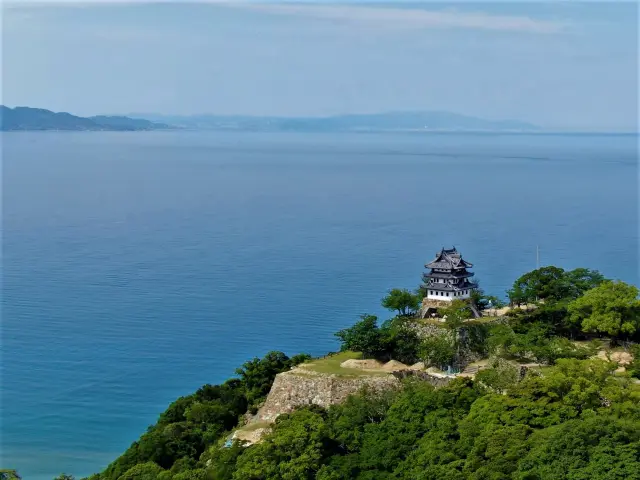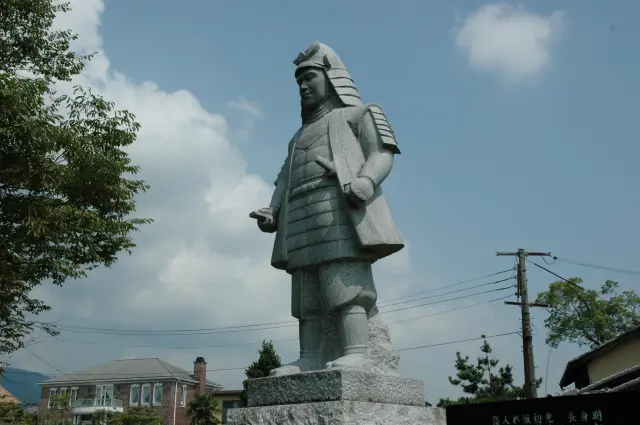
A trip to Shiga, filled with spiritual heights and profound depth
Last update
The largest lake in Japan, Lake Biwa, rests in Shiga Prefecture, a very short distance from Kyoto. This area, Omi, was the location of the ancient capital of Japan before it was moved to Kyoto, and the capital would go on to finally come to rest in present-day Tokyo. Although Omi’s status as the capital only lasted for five years due to domestic conflict, the history and culture of the ancient capital remains vibrant. There is a sense of unique tradition and rustic nostalgia that surrounds Omi, which sets it apart from the formal court culture of Kyoto. A visit to 1300-year-old Mii-dera Temple, also referred to as the “Phoenix Temple” gives visitors a closer look at the rich history and culture of Shiga Prefecture, which is also famous as the birthplace of Japanese tea cultivation.
Attend a private service and receive guidance directly from the temple’s head priest to discover the ancient temple in-depth

The front entrance of Mii-dera Temple, Daimon. The formal name for the temple, Onjo-ji is inscribed on the stone monument to the right.

Visit a number of valuable Cultural Properties with an exclusive guided tour from the head priest.
Whether taking a car or train, Mii-dera Temple is about 30 to 40-minutes from Kyoto Station. I opted for a train ride on a two-car train through the local routes that connect Kyoto to Shiga. A 15-minute walk from Miidera Station along the Lake Biwa Canal led me to the temple. Well-worn as it is by the passage of time, it has truly earned its moniker, “Phoenix Temple” because of how it has endured and survived countless wars and fires in the area for some 1300 years.
At the temple, I was greeted by Toshihiko Fuke, the 164th chief priest of Mii-dera Temple. He guided me through a Buddhist service, followed by a visit to some of the vast number of Cultural Properties of Japan cared for by the temple. These prized properties are usually not open to the public; paired with the priest’s explanations that gets to the heart of why they are treasured by the Japanese people, this is an insightful experience a world apart from a museum setting. Though his guidance I really got a sense of the region's folk tales, history, and cultural stories surrounding Mii-dera Temple which helped me gain more appreciation and understanding of the temple as a whole.
Experience authentic zazen (seated Zen meditation) in the Kangaku-in Kyakuden, a National Treasure guest house

Room partitions covered in original paintings by the Kano school (of Japanese painting). This is of a waterfall, called “Ichinoma no Takizu.”

Quietly meditate in a National Treasure site, a very rare opportunity essential to understanding the true purpose of the temple.
We entered the Kangaku-in Kyakuden, a National Treasure guest house which sits within its own gated corridors on the temple grounds. It was awarded National Treasure status as one of the leading examples of the shoin-zukuri architecture style that was developed during the Muromachi period (1336-1573) for samurai homes. Every wall and room partition comes alive with strikingly beautiful paintings in the Kano school of Japanese painting, each depicting traditional motifs that represent Japan, such as calming waterfalls and playful animals.
An outdoor porch spreads along the one side of the building, overlooking a peaceful garden and pond. Vermillion rugs lined the wooden floors, ready for the zazen experience. The monk gave me an explanation of zazen, from its roots to the correct postures and manners. He then guided me through the meditation where I cleared my head and become part of the serene setting; soon the only sounds I could hear were of the surrounding nature and the words of the monk. Finally, with a ring of a bell, the monk guided me back to reality.
Spend the night in the newly renovated priests’ temple quarters

The Buddhist altar with a number of historic statues including a central Fudo Myo-o statue is available for exclusive use morning and night.

Embrace the refined traditional Japanese atmosphere overlooking the peaceful garden.
Feeling clear headed and at peace, I then checked into my accommodation for the night, which was also on the temple grounds. Waqoo Mii-dera is a private accommodation at Mii-dera Temple, and bookings are limited to one group per day. The 400-year-old building used to be the Buddhist priests’ quarters at Myogon-in Hall and it was renovated and reinvented as a private luxury stay.
The interior of the 5-room building was designed and produced by Japanese architect, Tei Shuwa, who incorporated traditional Japanese touches such as use of washi paper, earthy tones including mud walls, and touches of wa culture within a modern ambiance. It is a harmonious mix of traditional Japanese Buddhist architecture with touches of simple modernism. The rooms are centered around the Buddhist altar with a Fudo Myo-o statue that is exclusively reserved for prayer and worship by guests. Even guests who aren’t religious can appreciate the beauty of the setting and the stunning artistry of the Buddhist altar.
The private garden is beautiful in any season of the year, and once the sun sets, it is transformed by carefully considered outdoor lighting. As a guest, I had freedom to use not only the accommodation building, but about 800 square meters of space altogether. To immerse myself in the full temple experience, I chose shojin ryori - Japanese vegetarian Buddhist cuisine - for dinner. After a calming soak in the wooden bath, I went to bed feeling rested, both in body and mind.
Begin the day with a glimpse into the world of Taimitsu, the Esoteric Buddhism practiced by the Tendai Sect

The priest begins the ritual in the stunning Kannon-do Hall.

The reading of the scripture is carried out by a priest in accordance with the practices of Tendai Esoteric Buddhism.
In the morning, I walked to the Kannon-do Hall through the refreshing natural scenery of the Mii-dera Temple grounds. The Kannon-do Hall is the 14th stop along the 33 temples in Western Japan as part of the Kansai Kannon Pilgrimage route, and it is dedicated to the Kannon Bodhisattva. At the hall, I participated in the morning service which included sutras and a time-honored ceremony. The chanting of the sutra was an invigorating way to wake up in the morning; and it helped me embody a different kind of awareness compared to the zazen experience the previous day.
Visit the vast tea fields of Omi, the birthplace of Japanese tea cultivation

Tongu Grand Tea Garden is the largest green tea plantation in Shiga prefecture.

Kenji Yoshinaga, the 7th generation head of the long-established plantation guides visitors around the tea fields.
After completing my monastic-style stay at Mii-dera Temple, I headed towards Koka City in the southeastern part of Shiga. Having had my mind and spirit cleansed, it was now time to cleanse my palette through tea. Shiga Prefecture’s Omi tea - is how Japanese tea cultivation began. It is believed that the founder of Tendai Esoteric Buddhism brought back the tea seeds from the Tang Dynasty and planted them here some 1200 years ago.
Koka City is the famous production area for Omi tea, and among the plantations, Tongu Grand Tea Garden is known as the greatest producer in the prefecture. At the plantation, master Kenji Yoshinaga greeted me and showed me around. He is the seventh-generation head of Maruyoshi Ohmi-cha, a tea shop established over 100 years ago. Master Yoshinaga is also a Japanese tea expert with a tenth-degree qualification, which only 15 people in Japan hold. Through his masterful knowledge and passion, he guided me on a tour through the tea plantation while sharing stories about Omi tea.
Experience roasting green tea with guidance from a highly respected tea master

Experience the intricacies of roasted green tea through its diverse colors, aroma, and flavors through the tasting experience.

A close-up look at the master roasting tea differentiated by roasting time, aroma, and color.
After learning about how tea is cultivated, we then went to Master Yoshinaga’s Maruyoshi Ohmi-cha tea shop. There, I got to experience the tasting menu and learned how to roast green tea (hojicha) myself. Master Yoshinaga also demonstrated roasting and brewing tea, and it was a true treat to be able to taste the master’s own creations. It was also mind-blowing to experience firsthand how the same batch of tea leaves could change in color, smell, and taste just by adjusting roasting and brewing methods. The tea shop experience also included roasting my own tea to take home, which was a great souvenir to savor.
This trip to Shiga prefecture helped me deepen my understanding for Japan’s roots - from religion to tea - and it was a delight to cleanse my mind, body, and spirit through the journey.
By personally visiting Shiga and experiencing and telling about the wonderful culture and tradition we encounter there, we hope we can be some help in ensuring that charming tradition and culture of Shiga is passed down to the next generation.
Check also...

Restrictions on Large Baggage

Hidden Stories in Stone: Exploring Japan’s Castle Walls

Feel Like a Lord: Castle with Stunning Panorama Views

Castles of Toyotomi Hideyoshi

Castles of Akechi Mitsuhide

Castles of Oda Nobunaga

Fermentation, Forests and Waters - A Journey Into the Living Legacy of Tradition and Community in Shiga and Nara

